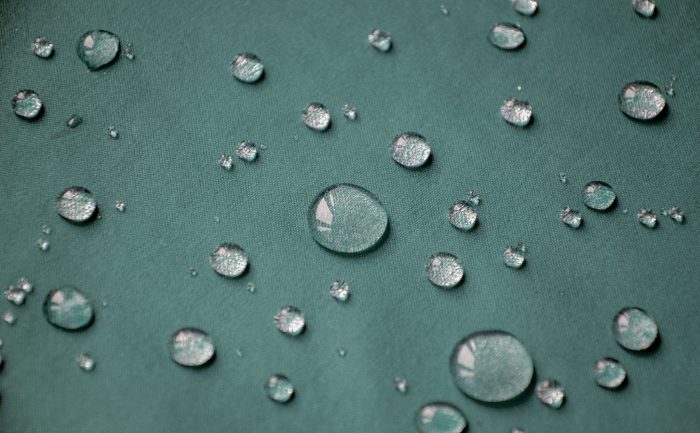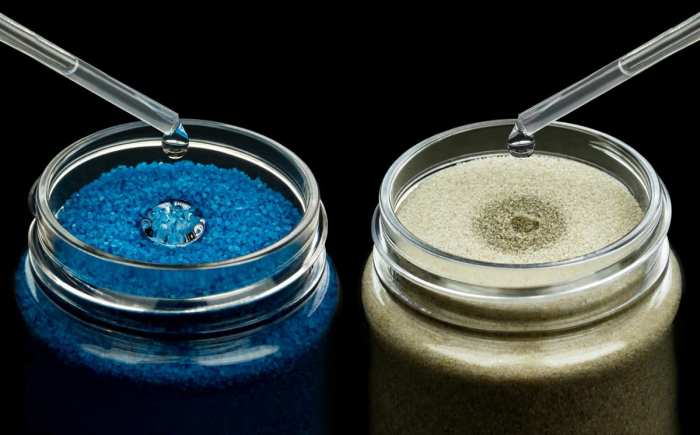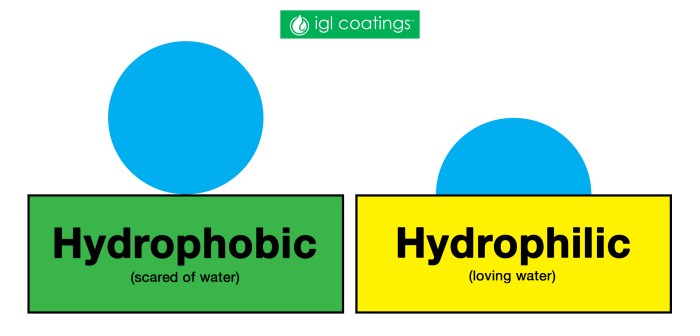The oil-loving tail of a surfactant molecule is called – The oil-loving tail of a surfactant molecule, also known as the hydrophobic tail, plays a crucial role in determining the behavior and applications of surfactants. This captivating exploration delves into the nature, types, interactions, and diverse uses of these essential components, unveiling their significance in various industries and environmental considerations.
Surfactants, short for surface-active agents, are amphiphilic molecules that possess both hydrophilic (water-loving) and hydrophobic (oil-loving) regions. The hydrophobic tail, composed of hydrocarbon chains, exhibits a strong affinity for nonpolar substances like oils and fats. This unique property enables surfactants to interact effectively with both aqueous and non-aqueous environments, making them indispensable in a wide range of applications.
Define the Oil-Loving Tail of a Surfactant Molecule
Surfactants, short for surface-active agents, are amphiphilic molecules that possess both hydrophilic (water-loving) and hydrophobic (oil-loving) regions. The oil-loving tail of a surfactant molecule is a hydrocarbon chain that interacts favorably with nonpolar substances, such as oils and greases.
The hydrophobic nature of the oil-loving tail arises from its nonpolar structure. Nonpolar molecules lack a net electrical charge and do not form strong interactions with water molecules. As a result, the oil-loving tail tends to avoid contact with water and instead associates with other nonpolar molecules.
Types of Oil-Loving Tails

The oil-loving tail of a surfactant molecule can vary in length and structure. Common types of hydrocarbon chains found in oil-loving tails include:
- Saturated hydrocarbon chains:These chains consist of carbon atoms bonded by single bonds, resulting in a straight or branched structure. Examples include dodecyl (C 12H 25) and hexadecyl (C 16H 33) chains.
- Unsaturated hydrocarbon chains:These chains contain one or more carbon-carbon double or triple bonds, introducing kinks or bends into the chain. Examples include oleyl (C 18H 33) and linoleyl (C 18H 31) chains.
- Aromatic hydrocarbon chains:These chains contain one or more benzene rings, providing a rigid and planar structure. Examples include phenyl (C 6H 5) and naphthyl (C 10H 7) chains.
Interactions with Oil and Water: The Oil-loving Tail Of A Surfactant Molecule Is Called

The oil-loving tail of a surfactant molecule plays a crucial role in surfactant behavior. It interacts with oil molecules through van der Waals forces, which are weak attractive forces between nonpolar molecules. These forces allow the surfactant to dissolve in oil and form mixed micelles, where the oil-loving tails point inward and the hydrophilic heads point outward.
In water, the oil-loving tail of a surfactant molecule forms micelles or other aggregates to minimize its exposure to water. Micelles are spherical structures with the oil-loving tails oriented towards the interior and the hydrophilic heads facing the water.
Applications of Surfactants with Oil-Loving Tails

Surfactants with oil-loving tails are widely used in various industries, including:
- Detergents:Surfactants help remove dirt and oil from fabrics by forming mixed micelles with the soil, allowing it to be washed away with water.
- Emulsifiers:Surfactants prevent the separation of immiscible liquids, such as oil and water, by forming emulsions. Emulsions are mixtures of two or more immiscible liquids that are stabilized by surfactants.
- Dispersants:Surfactants help disperse solid particles in liquids, preventing them from settling or clumping together. Dispersants are used in industries such as mining, agriculture, and wastewater treatment.
Environmental Considerations

While surfactants with oil-loving tails are essential for many industrial applications, their environmental impact must be considered. Some surfactants can be toxic to aquatic organisms and can accumulate in the environment. Biodegradable surfactants, which break down naturally, are preferred to minimize environmental concerns.
Strategies to reduce the environmental footprint of surfactants with oil-loving tails include:
- Using biodegradable surfactants:Biodegradable surfactants break down into harmless substances over time, reducing their persistence in the environment.
- Optimizing surfactant use:Using the minimum amount of surfactant necessary for the desired application can minimize environmental impact.
- Proper disposal of surfactant-containing products:Surfactant-containing products should be disposed of properly to prevent their release into the environment.
FAQ Resource
What is the primary function of the oil-loving tail in a surfactant molecule?
The oil-loving tail, or hydrophobic tail, enables surfactants to interact with and dissolve nonpolar substances like oils and fats, making them effective in applications such as detergents and emulsifiers.
How do surfactants contribute to the formation of micelles?
The hydrophobic tails of surfactants aggregate together to form the core of micelles, while the hydrophilic heads face outward, allowing the micelle to interact with both aqueous and non-aqueous environments.
What are some common examples of surfactants with oil-loving tails?
Sodium dodecyl sulfate (SDS), cetyltrimethylammonium bromide (CTAB), and Triton X-100 are widely used surfactants with oil-loving tails.